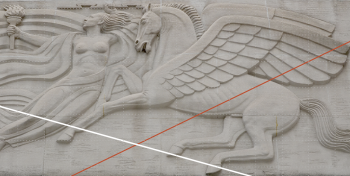The latest session of the Arts Sponsors Insight Forum took place last week with a focus on measurement and evaluation. This topic is critical for demonstrating return on investment in arts partnerships, yet there are some wide-spread myths I’ve heard throughout my career that we wanted to challenge. Angela Diakopolou of Sphere Insights, our research partner, joined me in conversation.
Myth One: Arts sponsorship is impossible to measure
The idea that art sponsorship is impossible to measure has persisted for years. But in reality, art sponsorship can be measured - provided the objectives are clearly defined. These objectives will naturally vary depending on the sponsor’s goals, for example, whether they're focused on brand visibility, stakeholder engagement, social impact, or internal culture. Then it’s a case of establishing a base line, and measuring the change.
Myth Two: We use the data the arts organisations give us
This happens a lot. "Its data, so we're done evaluation". The truth is that this data is not objective, nor is it measuring progress in reaching your own goals. Audience numbers are useful to identify reach, but they don’t take into account your own aims and objectives. A couple of questions about awareness in a visitor questionnaire is simply not enough to provide useful insight to you as a sponsor.
Myth Three: There should be a simple methodology everyone should use
This oversimplifies the diverse and often layered nature of sponsorship outcomes. A one-size-fits-all model fails to reflect the nuanced objectives of different sponsors. In practice, the most effective measurement approach is one that’s shaped by the sponsor’s specific objectives and target audiences. Flexibility and alignment are key - what you measure depends entirely on why you’re sponsoring.
Myth Four: Evaluation is a big and expensive undertaking
Not true. If you have budget challenges, then focus on core objectives to ensure the spend you do make is most effective. The best way to keep a sponsorship you 'know' is working, is to prove to budget holders and bean counters that the spend you are making provides a strong return.
